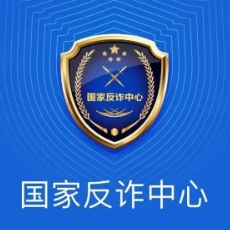agi Stands for Artificial General Intelligence: Your Guide to What it Means in English
Have you ever seen the term “AGI” buzzing around tech news or heard it whispered in conversations about the future of AI, only to pause and wonder, “Agi… what does that mean, exactly?” You’re not alone. In the rapidly evolving landscape of artificial intelligence, acronyms fly fast and furious. AGI stands for Artificial General Intelligence, a concept both profoundly simple in its ambition and breathtakingly complex in its implications. While today’s headlines are often dominated by AIGC (Artificial Intelligence Generated Content) like ChatGPT writing essays or DALL-E creating images, AGI represents the ultimate horizon – an intelligence mirroring our own.
AGI refers to a hypothetical type of artificial intelligence that possesses the ability to understand, learn, and apply knowledge across a vast array of tasks and domAIns, matching or even surpassing human cognitive abilities. Unlike the specialized AI (Narrow AI or Weak AI) we interact with daily – which excels only in specific, predefined tasks like playing chess, recommending movies, or recognizing faces – AGI would be generalized.
The core characteristics defining AGI, often called “Strong AI” or “Human-Level AI,” include:
- Generalization & Adaptability: The capacity to learn and perform any intellectual task a human can, transferring knowledge seamlessly between vastly different domains. An AGI trained on medical data could potentially compose a symphony or solve complex physics problems without explicit retraining.
- Autonomous Learning & Problem Solving: The ability to independently set its own goals, learn from experience, formulate complex plans, and reason through abstract problems without constant human guidance or task-specific programming.
- Understanding & Reasoning: Possessing a deep, contextual, and common-sense understanding of the world, concepts, and causality. This involves true comprehension, not just pattern recognition or statistical prediction.
- CreatiViTy & Innovation: The potential to generate genuinely novel ideas, solutions, inventions, or artistic expressions that are both meaningful and contextually appropriate.
Why AGI Remains Elusive: The Grand Challenge
The pursuit of AGI is arguably the single most ambitious goal in computer science. Its realization faces monumental hurdles:
- The Complexity of Human Cognition: Replicating the vast, integrated network of human consciousness, subconscious processing, emotional intelligence, and embodied cognition remains poorly understood.
- Common Sense & World Knowledge: Encoding the immense, implicit knowledge humans accumulate about the physical world, social interactions, ethics, and bASIc physics is an enormous challenge. Current large language models (LLMs) used in AIGC often lack this robust, consistent understanding.
- True Reasoning & Abstraction: Moving beyond statistical correlations to achieve genuine logical deduction, causal inference, counterfactual reasoning, and handling abstract concepts reliably.
- Autonomy & Goal Alignment: Designing systems capable of independent learning and action while ensuring their goals and actions remain beneficial and aligned with human values is a critical, unsolved problem (the AI alignment problem).
- Massive Computational Requirements: Creating the algorithms and obtaining the computational power necessary to support AGI-level cognitive processes is likely immense, pushing the boundaries of current hardware.
AIGC: The Generative Powerhouse Powering Today’s AI Revolution
While the dream of AGI captivates researchers, the reality transforming our digital world right now is AIGC (Artificial Intelligence Generated Content). This term specifically refers to highly sophisticated Narrow AI systems capable of creating novel, high-quality digital content – text, images, audio, video, code – based on prompts given by a user.
- Core Technology: AIGC primarily leverages Large Language Models (LLMs) like GPT-4, Claude, and Gemini (text-focused), and Diffusion Models like Stable Diffusion, DALL-E 3, and Midjourney (image/video focused). These models are trained on massive datasets scraped from the internet.
- How it Works (Simplified): Through analyzing these immense datasets, these models learn intricate patterns, relationships, and structures within the data (e.g., language grammar, pixel layouts, audio waveforms). When given a prompt (e.g., “write a blog post about AGI,” “create an image of a robot painting a landscape”), the model uses its learned patterns to generate new outputs that statistically match the request and its training data.
- Key Capabilities: Modern AIGC systems exhibit remarkable abilities:
- Content Generation: Creating articles, stories, poems, marketing copy, social media posts, code snippets, etc.
- Image & Video Synthesis: Generating realistic or artistic images, animations, and increasingly complex videos from text descriptions.
- Audio & Music Creation: Composing music, generating realistic speech (text-to-speech), or altering voices.
- Multimodal Capabilities: Combining different modes, like generating images from text descriptions, answering questions about images, or creating videos with synchronized audio.
- Ubiquitous Impact: AIGC tools are rapidly being integrated into search engines (Google’s SGE), office suites (Microsoft Copilot), creative software (Adobe firefly), customer service chatbots, and countless other applications, fundamentally changing workflows across industries.
AIGC: Stepping Stone or Distraction on the Path to AGI?
Is the meteoric rise of AIGC bringing us closer to AGI (Artificial General Intelligence)? The relationship is complex.
- Demonstrating Capability: Advanced AIGC systems like multimodal LLMs showcase abilities (conversational fluency, creative output, bASIC reasoning) that were unimaginable a decade ago, hinting at the potential for broader intelligence.
- Contributing to Foundational Research: Research into scaling LLMs, improving reasoning benchmarks, and








 津公网安备12011002023007号
津公网安备12011002023007号